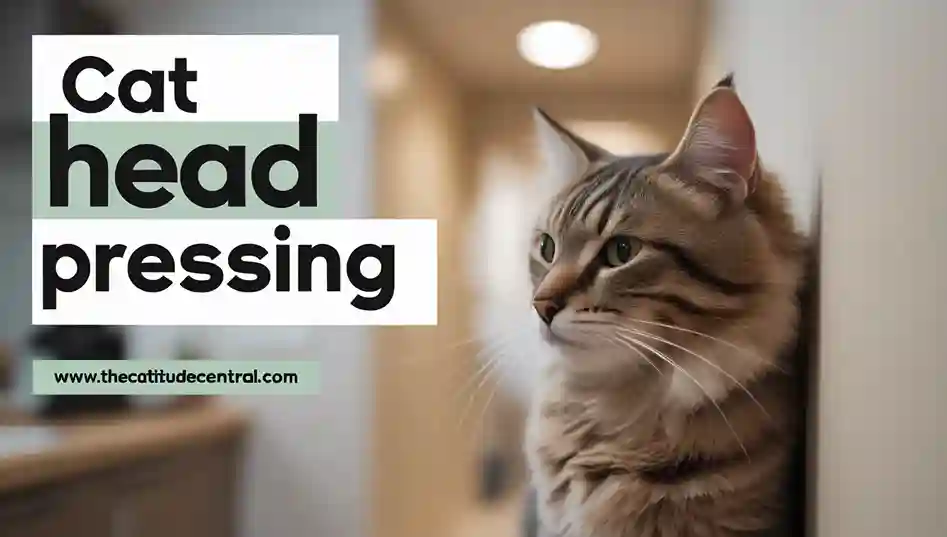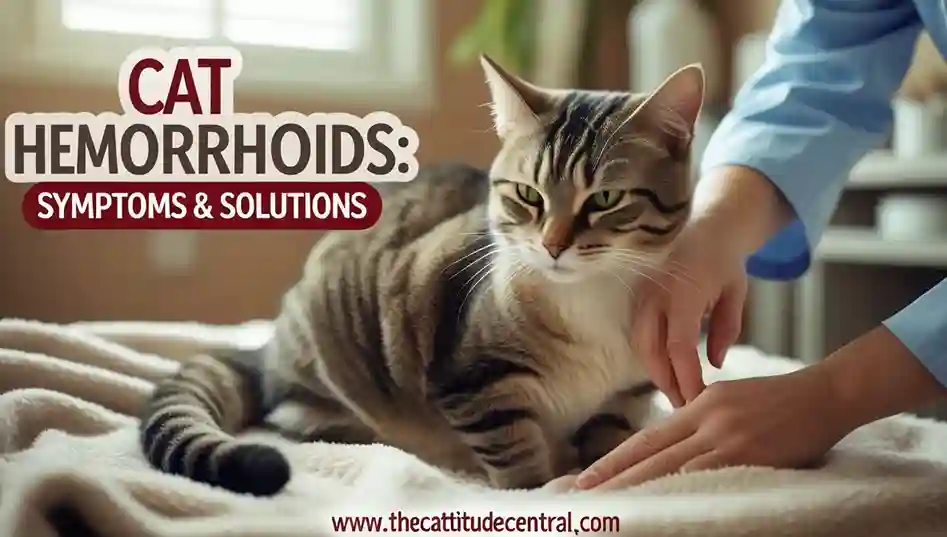If your cat is struggling with appetite loss or related health issues, Mirtazapine for Cats could be a game-changer. This medication, originally developed for human use, has found a valuable place in veterinary medicine, particularly for felines.
In this comprehensive blog post, we’ll explore everything you need to know about Mirtazapine, from its mechanisms to practical administration advice. Whether you’re dealing with a picky eater or a cat recovering from illness, understanding Mirtazapine can empower you to make informed decisions alongside your veterinarian.
Understanding Mirtazapine: A Quick Overview
Mirtazapine is a tetracyclic antidepressant that works by affecting serotonin and norepinephrine levels in the brain. While it’s primarily known for treating depression in humans, its application in veterinary care is quite different. For cats, Mirtazapine acts mainly as an appetite stimulant, helping to combat anorexia, nausea, and vomiting. This makes it especially useful for cats suffering from chronic conditions that suppress hunger.
The drug’s efficacy stems from its ability to block certain receptors, which in turn promotes food intake. Veterinarians often prescribe Mirtazapine when other methods fail to encourage eating. It’s available in various forms, including oral tablets and a transdermal ointment called Mirataz, designed specifically for feline use. This versatility allows pet owners to choose the most suitable option based on their cat’s temperament and health needs.
One key aspect of Mirtazapine is its rapid onset of action. Many cats show improved appetite within hours of administration, making it a go-to solution for acute cases. However, it’s not a cure-all; it’s best used as part of a broader treatment plan under professional guidance.
Key Uses of Mirtazapine for Cats
Mirtazapine is most commonly employed to stimulate appetite in cats experiencing unintended weight loss. Conditions like chronic kidney disease (CKD), cancer, or gastrointestinal disorders often lead to anorexia, where cats refuse food despite needing nutrition for recovery. By enhancing hunger signals, Mirtazapine helps these animals regain strength and maintain a healthy weight.
Beyond appetite stimulation, Mirtazapine can alleviate nausea and vomiting, which are common in cats with liver or kidney issues. It’s also sometimes used off-label for behavioral issues, though this is less common and requires careful monitoring.
In cases of hyperthyroidism or post-surgery recovery, Mirtazapine supports nutritional intake, preventing further complications from malnutrition. Veterinarians emphasize that while Mirtazapine is effective, it’s crucial to address the underlying cause of appetite loss rather than relying solely on the medication.
For senior cats or those with dental problems, Mirtazapine can bridge the gap until more permanent solutions, like dietary changes, take effect. Its role in palliative care is particularly noteworthy, offering comfort to cats in their later years.
Dosage Guidelines for Mirtazapine in Cats
Determining the right dosage of Mirtazapine for Cats is vital to avoid adverse effects. Typically, the oral form starts at 1.88 mg to 3.75 mg every 48 to 72 hours, depending on the cat’s size and condition. This lower, more frequent dosing is preferred over higher amounts to minimize side effects.
For the transdermal version, Mirataz, a 1.5-inch ribbon of ointment is applied to the inner ear once daily, providing about 2 mg of Mirtazapine. This method is ideal for cats that resist pills, as it absorbs through the skin.
Always consult a vet for personalized dosing, as factors like age, weight, and concurrent medications influence the amount. Overdosing on Mirtazapine can lead to serotonin syndrome, a serious condition requiring immediate attention.
Adjusting Dosage for Specific Conditions
In cats with CKD, lower doses of Mirtazapine are often recommended to prevent buildup in the system. For acute nausea, a single dose might suffice, while chronic cases may require ongoing use.
Monitoring your cat’s response is key; if appetite doesn’t improve within a few days, the vet may adjust the Mirtazapine regimen.
How to Administer Mirtazapine to Your Cat
Administering Mirtazapine for Cats can be straightforward with the right techniques. For oral tablets, hide the pill in a treat or use a pill pocket to make it palatable. Products like Greenies Feline Pill Pockets from Amazon are excellent for this purpose, available in flavors like chicken or salmon to entice even finicky cats.
The transdermal ointment simplifies things: Wear gloves, apply to the ear’s inner surface, and rotate ears daily to avoid irritation. This form of Mirtazapine reduces stress for both you and your pet.
If your cat spits out pills, consider Vetoquinol Pill Wrap Treats from Amazon, a moldable paste that wraps around the medication.
Tips for Stress-Free Administration
Start with a calm environment and positive reinforcement. If using Mirtazapine in pill form, practice with empty capsules first. For transdermal, ensure the ear is clean and dry.
Potential Side Effects and Precautions
While effective, Mirtazapine can cause side effects like increased vocalization, hyperactivity, or tremors. These often occur within 90 minutes and subside as the drug wears off.
Cats with liver or kidney disease should use Mirtazapine cautiously, as it may elevate liver enzymes. Rare but serious issues include serotonin syndrome, marked by agitation, dilated pupils, and seizures.
Precautions include avoiding use in pregnant or nursing cats and monitoring for drug interactions. If side effects persist, discontinue Mirtazapine and seek vet advice immediately.
Managing Side Effects
Lowering the dose of Mirtazapine for Cats can mitigate issues. Hydration and a quiet space help during episodes of hyperactivity.
Alternatives to Mirtazapine for Cats
If Mirtazapine isn’t suitable, alternatives like capromorelin (Elura) offer oral liquid appetite stimulation. Cyproheptadine, another antihistamine, serves as a milder option.
Natural supplements, such as those from Amazon like Cat Weight Gain & Hyperthyroidism Treatment, provide non-prescription support, though they’re not as potent as Mirtazapine.
Veterinary diets or B-vitamin injections can also boost appetite without medication.
When to Consider Alternatives
If your cat experiences severe side effects from Mirtazapine, discuss switches with your vet. Elura is FDA-approved for similar uses.
FAQs About Mirtazapine for Cats
Based on common searches and trends, here are answers to frequently asked questions about Mirtazapine for Cats.
How Long Does Mirtazapine Take to Work in Cats?
Mirtazapine for Cats typically stimulates appetite within 1-2 hours, with peak effects in 4-8 hours.
What Is the Dosage of Mirtazapine for Cats?
Standard dosing is 1.88-3.75 mg every 48-72 hours orally, or daily transdermal application.
Can Mirtazapine Cause Side Effects in Cats?
Yes, common ones include vocalization and tremors; monitor closely.
Is Mirataz the Same as Mirtazapine for Cats?
Mirataz is a transdermal form of Mirtazapine for Cats, specifically for topical use.
How Much Mirataz Is in a Tube?
A tube contains enough for about 14 days of treatment.
Why Wear Gloves When Applying Mirataz?
To prevent accidental absorption through human skin.
Can Mirtazapine Be Used for Weight Gain in Cats?
Yes, it’s for unintended weight loss, helping cats gain by stimulating appetite.
What If My Cat Overdoses on Mirtazapine?
Seek emergency vet care; symptoms include vomiting and lethargy.
How Often Can I Give Mirtazapine to My Cat?
Every 48-72 hours for oral; daily for transdermal.
Is Mirtazapine Safe for Long-Term Use in Cats?
With vet supervision, yes, but regular check-ups are essential.
Wrapping Up: Is Mirtazapine Right for Your Cat?
Mirtazapine for Cats offers a lifeline for many felines facing appetite challenges. By understanding its uses, dosages, and potential risks, you can better support your cat’s health. Always partner with a veterinarian to tailor Mirtazapine to your pet’s needs.
For related products, explore Amazon’s selection of pill pockets and appetite aids to ease administration.
Sources:



